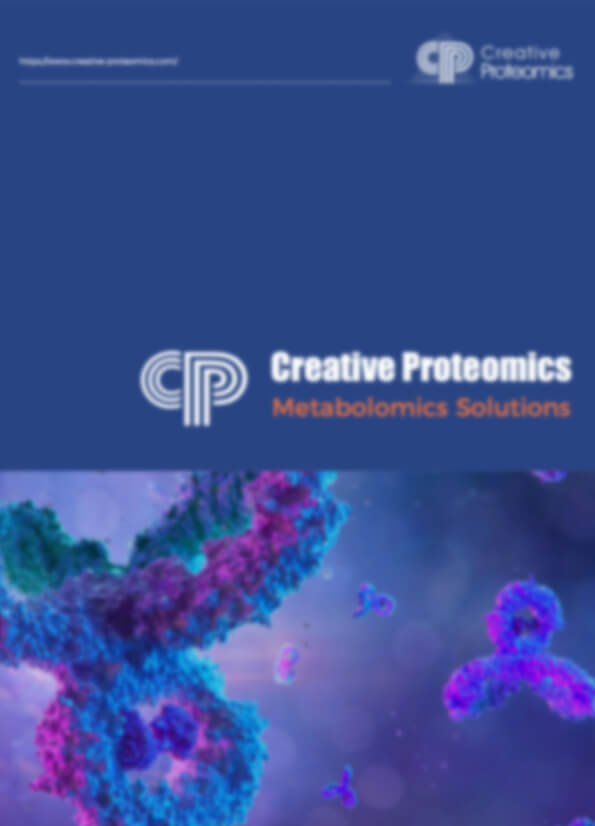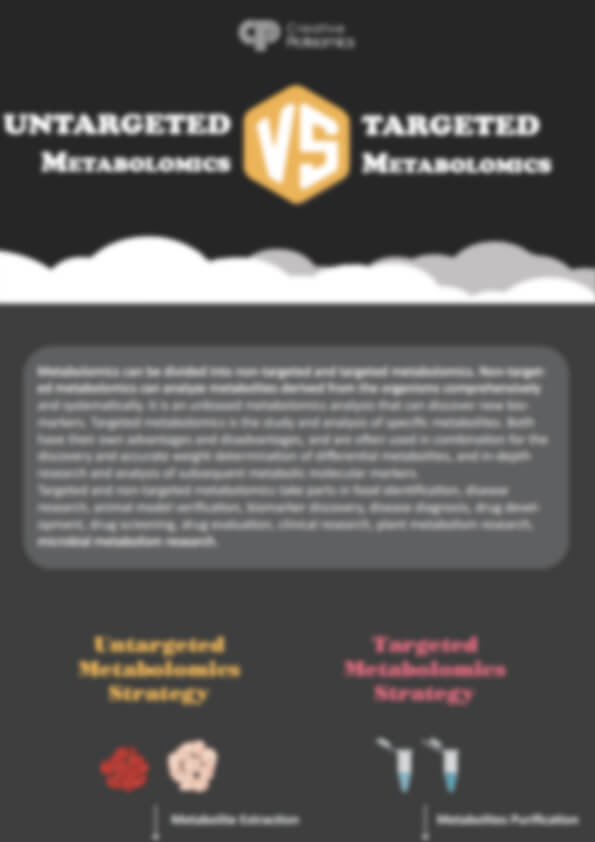Retinoic Acid Analysis Service
Creative Proteomics offers specialized retinoic acid (RA) analysis to accurately quantify low-abundance, light-sensitive RA isomers and metabolites in complex samples. Using advanced LC-MS/MS and HPLC-UV platforms, we provide isomer-specific detection down to 0.01 ng/mL. Our services include quantitative profiling, untargeted metabolomics, and pharmacokinetic studies, supporting research in oncology, dermatology, and toxicology. With robust anti-interference measures and light-protected protocols, we deliver reliable data to advance understanding of RA's roles in disease.
Submit Your Request Now
×- What We Provide
- Advantages
- Technology Platform
- Sample Requirements
- FAQ
- Publications
What is Retinoic Acid?
Retinoic acid (RA) is a crucial metabolite of vitamin A (retinol) that plays a significant role in cell differentiation, embryonic development, and immune function. It is widely studied in dermatology, oncology, and neuroscience due to its regulatory impact on gene expression via nuclear receptors. Retinoic acid exists in multiple isomeric forms, primarily all-trans retinoic acid (ATRA), 9-cis retinoic acid, and 13-cis retinoic acid, each with distinct biological activities. Given its low concentration in biological samples and structural instability, precise quantification and characterization of RA are critical for biomedical research and pharmaceutical development.
Retinoic Acid Analysis Service Offered by Creative Proteomics
- Retinoic Acid Quantitative and Qualitative Analysis: Accurate measurement of retinoic acid and its metabolites in plasma, serum, tissue, urine, and cell culture media.
- Isomer-Specific Detection: Differentiation and quantification of all-trans retinoic acid (ATRA), 9-cis retinoic acid, and 13-cis retinoic acid.
- Targeted and Untargeted Metabolomics: Comprehensive analysis of retinoic acid biosynthesis and metabolic pathways.
- Pharmacokinetic and Pharmacodynamic Studies: Reliable data to support drug development and therapeutic evaluation.
- Custom Method Development and Validation: Tailored analytical solutions to meet specific research needs.
List of Retinoic Acid and Related Metabolites
| Category | Metabolite | Abbreviation |
|---|---|---|
| Retinoic Acids | All-trans Retinoic Acid | ATRA |
| 9-cis Retinoic Acid | 9-cis RA | |
| 13-cis Retinoic Acid | 13-cis RA | |
| Retinoic Acid Metabolites | 4-oxo-All-trans RA | 4-oxo-ATRA |
| 4-oxo-9-cis RA | 4-oxo-9-cis RA | |
| 4-oxo-13-cis RA | 4-oxo-13-cis RA | |
| 18-hydroxy-RA | 18-OH-RA | |
| 5,6-epoxy-RA | 5,6-Epoxy-RA | |
| Retinoids and Precursors | Retinol | ROL |
| Retinaldehyde | RAL | |
| Retinyl Esters | RE | |
| Conjugated Metabolites | Glucuronidated RA | RA-Gluc |
Advantages of Retinoic Acid Assay
- High Sensitivity and Precision: Detects RA isomers (e.g., all-trans RA, 9-cis RA) at levels as low as 0.01 ng/mL using LC-MS/MS, ensuring accurate quantification in trace biological samples.
- Superior Resolution: Achieves >95% chromatographic resolution for structurally similar metabolites (e.g., 4-oxo-RA), reducing cross-reactivity and false positives.
- Multi-Receptor Profiling: Evaluates RA activity across six nuclear receptors (e.g., RARα, LXRα, PPARγ) for insights into differentiation, lipid metabolism, and endocrine disruption.
- Robust Anti-Interference: Utilizes solid-phase extraction and light-protected protocols to minimize matrix interference (e.g., lipids in liver tissue) and protect light-sensitive RA derivatives.
- Customizable Panels: Offers tailored multiplex assays combining RA with biomarkers (e.g., vitamin D, carotenoids) for comprehensive metabolic profiling.
- Comprehensive Data Integrity: Provides raw chromatograms, calibration curves, and validation reports to ensure transparency and reproducibility.
Technology Platforms for Retinoic Acid Analysis Service
HPLC-UV (High-Performance Liquid Chromatography with UV Detection)

Agilent 1260 Infinity II HPLC (Figure from Agilent)
GC-MS (Gas Chromatography-Mass Spectrometry)

Agilent 7890B-5977B (Figure from Agilent)
LC-MS/MS (Liquid Chromatography-Tandem Mass Spectrometry)

SCIEX Triple Quad™ 6500+ (Figure from Sciex)
LC-MS

Q Exactive™ Plus Hybrid Quadrupole-Orbitrap™ Mass Spectrometer (Figure from Thermo)
Sample Requirements for Retinoic Acid Analysis Service
| Sample Type | Sample Volume | Collection Method | Storage Conditions |
|---|---|---|---|
| Plasma | 200–500 µL | Collected in EDTA or heparin tubes | -80°C for long-term storage |
| Serum | 200–500 µL | Collected in plain tubes, allow to clot, centrifuge | -80°C for long-term storage |
| Cell Lysates | 50–100 µL | Homogenize cells in appropriate buffer | -80°C or liquid nitrogen |
| Tissues (e.g., liver, kidney) | 20–50 mg | Snap-frozen or stored in RNA/DNA preservative buffer | -80°C for long-term storage |
| Urine | 1–5 mL | Collected in sterile containers | -20°C to -80°C |
| Saliva | 1–2 mL | Collected using passive drool or collection tubes | -80°C for long-term storage |
| Cerebrospinal Fluid (CSF) | 1–2 mL | Collected via lumbar puncture | -80°C for long-term storage |
Applications of Retinoic Acid Assay Service
Cancer Research
Monitoring RA-induced gene expression, cell differentiation, and apoptosis markers (e.g., cleaved PARP) in cancer cells.
Endocrine Disruption
Evaluating RA's role in disrupting endocrine pathways and hormone regulation.
Toxicology Studies
Screening for RA-disrupting pollutants, such as organophosphate flame retardants, in environmental and biological samples.
Neurobiology
Investigating RA's impact on neuronal differentiation, brain development, and synaptic plasticity.
Developmental Biology
Studying RA's role in embryonic development, organogenesis, and cell differentiation processes.
Environmental Research
Assessing environmental contamination with RA-related compounds and their impact on ecosystems.
Nutritional Research
Analyzing retinol (vitamin A) and its metabolites to evaluate vitamin A status and its metabolic effects.
Disease Biomarker Discovery
Identifying RA-related biomarkers in various non-clinical conditions, such as metabolic or autoimmune research.
Pharmacology
Investigating RA's effects on nuclear receptors (e.g., RAR, PPARγ) and related molecular pathways.
Demo
FAQ of Retinoic Acid Analysis Service
How should light-sensitive samples be handled?
Retinoic acid is highly light-sensitive and prone to degradation. To prevent this:
- Collect samples using amber tubes or wrap them in foil.
- Minimize light exposure during sample preparation and storage.
- Store samples at -80°C for long-term preservation.
- Avoid repeated freeze-thaw cycles to maintain sample integrity.
Can you analyze plant or food samples for retinoic acid?
Yes, we provide validated methods for analyzing retinoic acid in plant tissues, oils, and fortified food products. Our customized extraction and purification protocols ensure accurate quantification, even in complex matrices. Contact us for tailored solutions for your specific sample type.
What are the detection limits for retinoic acid isomers?
Our advanced instruments offer highly sensitive detection for retinoic acid isomers:
- HPLC-UV: Detection limit of 0.1 ng/mL for routine analysis.
- LC-MS/MS: Detection limit of 0.01 ng/mL for trace-level quantification.
Do you quantify oxidative metabolites like 4-oxo-retinoic acid?
Yes, we provide accurate quantification of oxidative retinoic acid metabolites, including 4-oxo-RA and other derivatives. Using LC-MS/MS, we achieve a limit of quantitation (LOQ) of 0.05 ng/mL for these metabolites, ensuring reliable data for pharmacokinetic and biochemical studies.
Can I request raw data or method validation reports?
Yes. Full LC-MS/MS chromatograms, calibration curves, and validation data (accuracy, precision) are provided upon request.
What if my sample contains high lipid content?
Lipid-rich matrices (e.g., liver tissue) undergo SPE cleanup to eliminate interference, ensuring accurate quantification.
Learn about other Q&A.
Retinoic Acid Analysis Service Case Study
Publications
Here are some of the metabolomics-related papers published by our clients:

- A non-probiotic fermented soy product reduces total and ldl cholesterol: A randomized controlled crossover trial. 2021. https://doi.org/10.3390/nu13020535
- Resting natural killer cell homeostasis relies on tryptophan/NAD+ metabolism and HIF‐1α. 2023. https://doi.org/10.15252/embr.202256156
- Enhance trial: effects of NAD3® on hallmarks of aging and clinical endpoints of health in middle aged adults: a subset analysis focused on blood cell NAD+ concentrations and lipid metabolism. 2022. https://doi.org/10.3390/physiologia2010002
- Function and regulation of a steroidogenic CYP450 enzyme in the mitochondrion of Toxoplasma gondii. 2023. https://doi.org/10.1371/journal.ppat.1011566
References
- Morgenstern, Jakob, et al. "Quantification of all-trans retinoic acid by liquid chromatography–tandem mass spectrometry and association with lipid profile in patients with type 2 diabetes." Metabolites 11.1 (2021): 60. https://doi.org/10.3390/metabo11010060
- Chithalen, James V., et al. "HPLC-MS/MS analysis of the products generated from all-trans-retinoic acid using recombinant human CYP26A." Journal of lipid research 43.7 (2002): 1133-1142. https://doi.org/10.1194/jlr.M100343-JLR200












